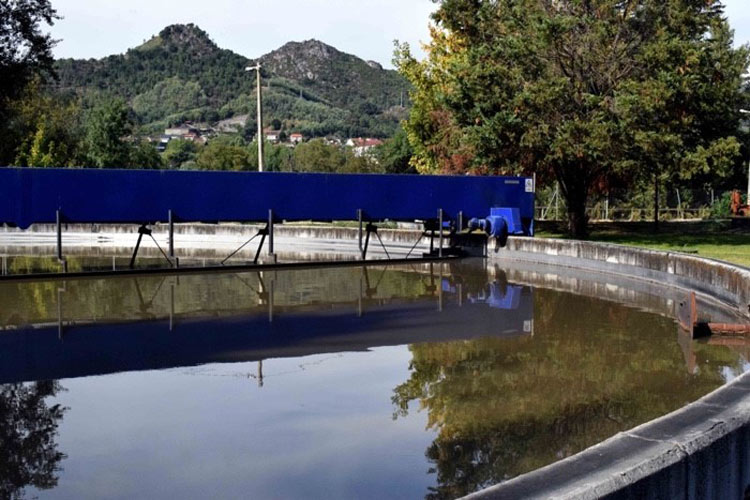In Andalusia it is necessary to invest between 360 and 645 million euros a year in infrastructure of the urban water cycle
According to the study ‘Analysis of the investment needs in renovation of the infrastructure of the urban water cycle’ of the Aquae and AEAS Chair
To guarantee the quality and sustainability of the services of the urban water cycle and to face the future scenarios posed by the climate crisis, Andalusia needs to invest annually between 360 and 645 million euros in urban hydraulic facilities. Nationally, this investment is between 2,221 and 3,858 million euros per year.

This is one of the conclusions of the study 'Analysis of the investment needs in renovation of the urban water cycle infrastructure', which has been presented by the Aquae Chair of Water Economics (promoted by the Aquae Foundation and the UNED and the Spanish Association of Water and Sanitation Supplies (AEAS) The Aquae Foundation is the foundation of Hidralia.
In Spain, 585 million euros are invested annually in renovating the infrastructure and networks of the urban water cycle, 70% -80% less than necessary. The fundamental reason is that the public administrations involved in a general way in their conservation do not prioritize the need to include the renewal of the water supply and sanitation systems of the cities in their strategic investment plans.
The infrastructures analyzed in this study are the adduction networks (pipes intended to drive water from the collection site to the treatment plant), water treatment plants, reservoirs, supply networks, sewerage networks, gas stations pumping, storm tanks and sewage treatment plants.
According to Amelia Pérez Zabaleta, director of the Aquae Chair, «we cannot lose sight of the enormous impact of climate change on the hydrological cycle in the world, altering rainfall patterns, increasing the frequency and intensity of extreme weather events, giving place to droughts and floods with a great impact for cities. That is, climate change is magnifying the problems that already existed; therefore, investing in urban water cycle infrastructure is key not only to maintain the current set of hydraulic facilities in our country, but also to anticipate future scenarios resulting from climate change ».
How much is the hydraulic “heritage” of Andalusia worth?
According to the inventory carried out in this study, Spain currently has 248,245 km of supply networks, of which 41,868 km are in Andalusia; 189,203 km of sanitation networks, of which 30,883 km are in the Andalusian community; and 23,789 km of adduction networks. Andalusia is the region with the longest network length in Spain, followed by Catalonia and the Valencian Community.
In addition, our country also has 1,640 Potable Water Treatment Stations (ETAP), of which 248 are located in Andalusia, the second autonomous community with the most ETAP in Spain, behind Castile and León. These 248 installations have a value of 1,151 million euros. Of the 2,232 Wastewater Treatment Plants (WWTP) operating in Spain, 372 are located in Andalusia, the region with the most WWTP in the national territory. These 372 Andalusian infrastructures have a value of 2,384 million euros.
Spain currently has 29,305 deposits, of which 3,282 are in Andalusia and its value is 1,633 million euros; and 456 storm tanks, of which 9 are located in the Andalusian community. The Andalusian storm tanks have a value of 27 million euros.
These urban networks and infrastructures throughout the national territory have an approximate value of 207,492 million euros, a figure that in Andalusia stands at 33,752 million euros: the urban adduction network nationwide is valued at 5,138 million euros ( in Andalusia its value is 779 million euros); the national supply network, at 36,059 million euros (in Andalusia, 5,750 million euros); and the national sanitation network, at 128,917 million euros (in Andalusia, 21,692 million euros).
The autonomous communities that represent a higher current value with respect to the national total are Andalusia (16.27%), Catalonia (12.75%), Valencian Community (11.88%) and the Community of Madrid (10.87%) .
"The current national water policy only makes visible the so-called" new work ", but it is essential to make visible, between citizens and political authorities, the renovation needs of the extraordinary infrastructure and facilities park in Spain," explains Amelia Pérez Zabaleta , director of the Aquae Chair.
«At the systemic level, the urban water sector has a deficit in the renovation of this extensive infrastructure park, so we hope that the dissemination of this study encourages the competent public administrations to consider the need to renew it, since until now This “heritage” has been invisible to our central and regional authorities, even in planning, ”concludes Pérez Zabaleta.
